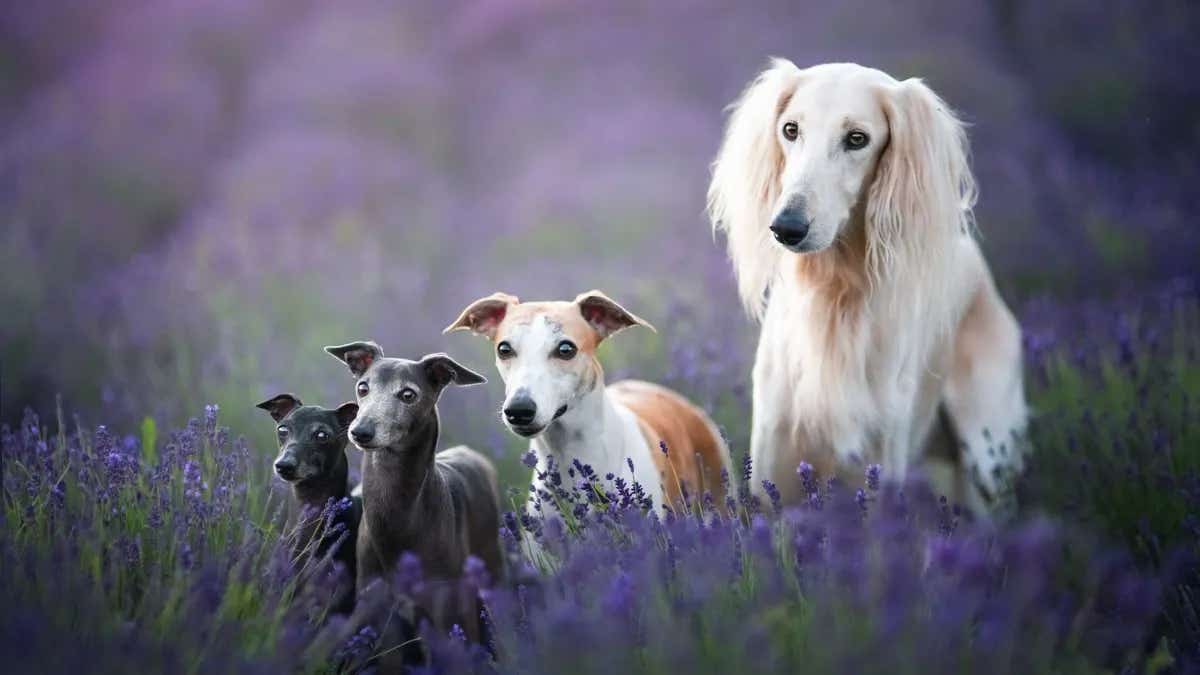British study identifies which dog breeds live the longest
Research data was collected from over 580,000 individual dogs spanning 150 different breeds

The formula provides a new “epigenetic clock,” a method for determining the age of a cell, tissue or organism based on a readout of its epigenetics. (CREDIT: Getty Images)
In the world of canine companions, there's a lot more to life expectancy than meets the eye. A recent study published in Scientific Reports unveils a groundbreaking revelation: small, long-nosed breeds like Whippets boast the highest life expectancies in the United Kingdom, while their male counterparts from medium-sized flat-faced breeds like English Bulldogs have the lowest.
With data collected from over 580,000 individual dogs spanning 150 different breeds, these findings could be instrumental in identifying dogs most vulnerable to early mortality.
Lead researcher Kirsten McMillan and her team compiled an extensive database, featuring a staggering 584,734 individual dogs. Drawing data from 18 distinct UK sources, including breed registries, veterinary records, pet insurance companies, animal welfare organizations, and academic institutions, the team left no stone unturned in their quest for canine longevity insights.
Each entry in the database meticulously noted essential details such as breed, sex, date of birth, and, if applicable, date of death. Categorizing the dogs into one of 155 pure breeds or classifying them as crossbreeds, McMillan's team had a comprehensive dataset to unravel the secrets of canine life expectancy.
Related Stories
Purebred dogs underwent further categorization based on size (small, medium, or large) and head shape (brachycephalic or short-nosed, mesocephalic or medium-nosed, and dolichocephalic or long-nosed) following guidelines from kennel club literature.
The median life expectancy was then calculated for each breed individually and for the crossbreed group, allowing for a deep dive into the effects of size and head shape on canine lifespans.
The results painted a vivid picture. Small dolichocephalic breeds, encompassing both male and female dogs such as Miniature Dachshunds and Shetland Sheepdogs, enjoyed the longest median life expectancies, clocking in at an impressive 13.3 years.
Male counterparts from medium-sized flat-faced breeds like English Bulldogs have the lowest life expectancies. (CREDIT: Creative Commons)
On the other end of the spectrum, medium brachycephalic breeds, represented by English Bulldogs and their kin, faced the shortest lifespans, with males averaging 9.1 years and females slightly outlasting them at 9.6 years.
Among the top 12 most popular breeds, accounting for over 50% of all pure breeds in the database, Labradors boasted a median life expectancy of 13.1 years, Jack Russell Terriers followed closely with 13.3 years, and Cavalier King Charles Spaniels secured 11.8 years.
Circular phylogeny representing ancestor‐to‐descendant breed relationship, along with median lifespan. Median lifespan for 148 purebreds, of which we had lifespan data, and could be assigned to tips of existing phylogenies. Hotter colours represent lower median lifespans. The phylogenetic signal across the entire breed tree was very strong (Pagel’s Lambda = 0.808), suggesting that median lifespan was strongly affected by the evolutionary history of dog breeds. (CREDIT: Scientific Reports)
Purebred dogs generally fared better than their crossbred counterparts, with a median life expectancy of 12.7 years compared to 12.0 years, and females surpassing males with a slight edge of 12.7 years versus 12.4 years.
It's essential to note that these findings apply specifically to dogs in the United Kingdom. Crossbreeds in the study were strictly defined as dogs not belonging to kennel club purebred breeds.
Median lifespan of the lowest quartile of breeds plotted onto the breed phylogeny. Hotter colours represent lower median lifespans. (CREDIT: Scientific Reports)
As the research unfolds, McMillan and her colleagues suggest that future investigations should delve into the world of "designer breeds," such as Labradoodles and Cockapoos, to account for the varying levels of genetic diversity these dogs share with mongrels. This distinction may shed further light on the factors influencing canine longevity.
As the scientific community continues to unravel the mysteries of doggy longevity, these findings pave the way for a brighter future for our furry friends, helping us ensure their well-being and happiness for years to come.
For more science and technology news stories check out our New Innovations section at The Brighter Side of News.
Note: Materials provided above by The Brighter Side of News. Content may be edited for style and length.
Like these kind of feel good stories? Get the Brighter Side of News' newsletter.



